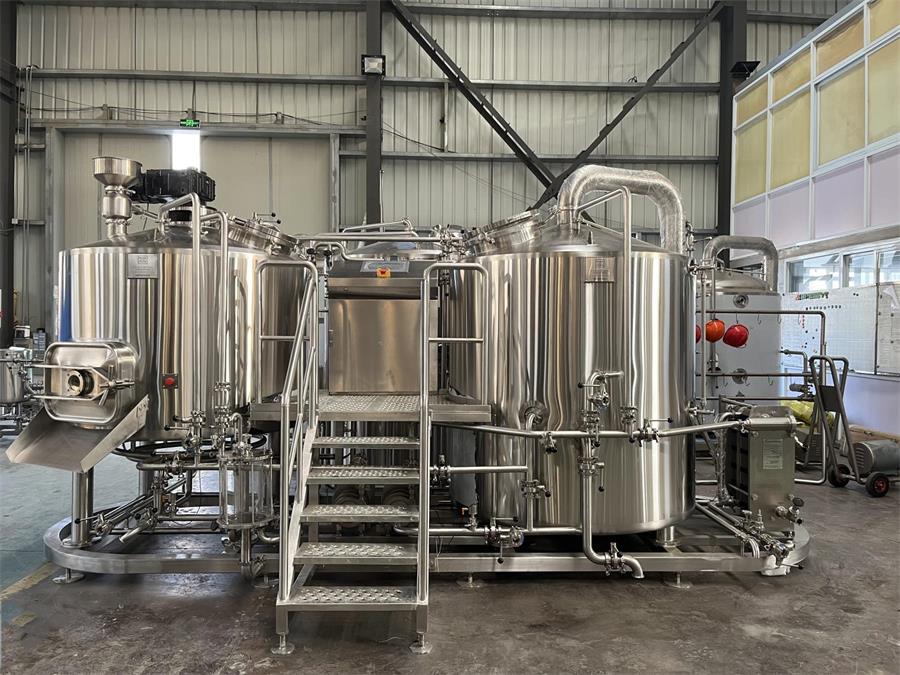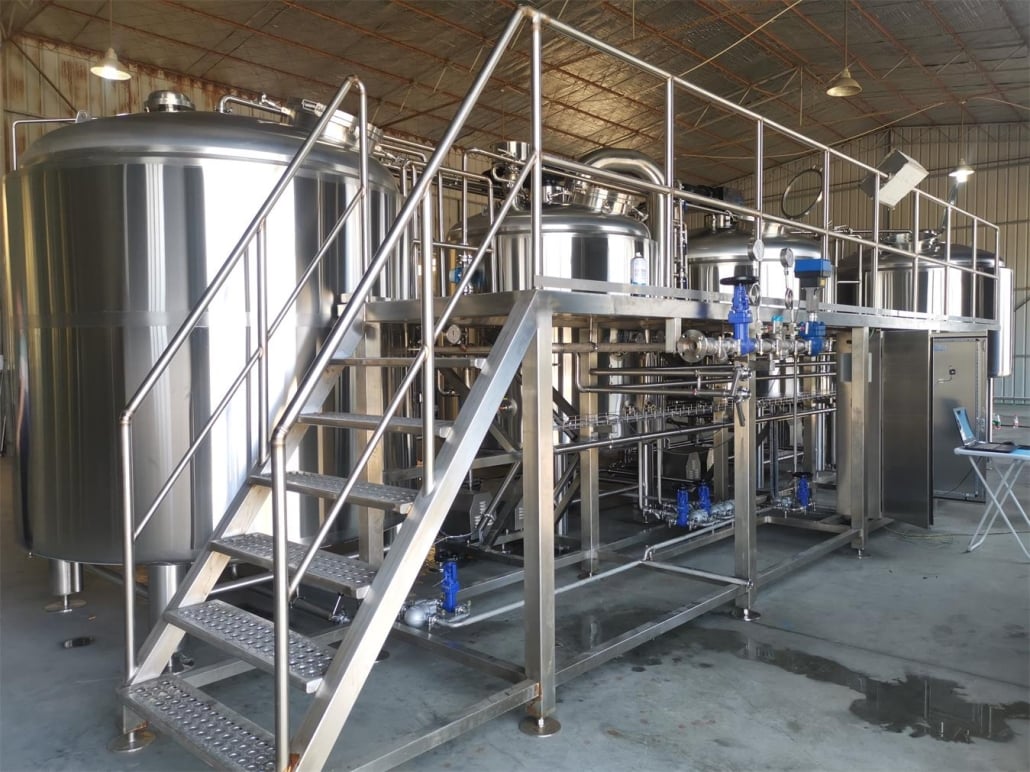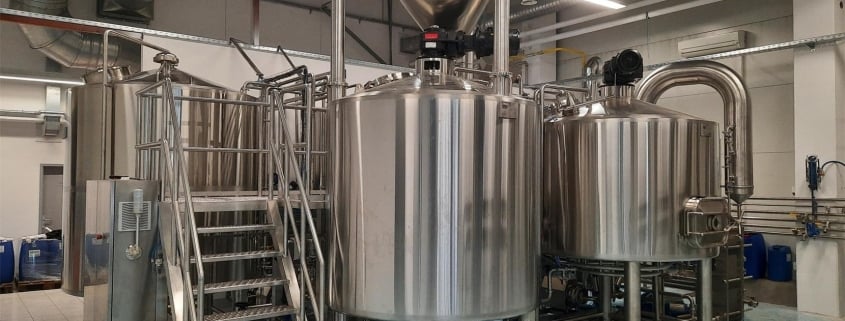Stainless Steel Beer Fermenters
Stainless steel beer fermenters are essential pieces of equipment for homebrewers and commercial breweries alike. These durable, sanitary vessels provide an ideal environment for the fermentation process, allowing yeast to convert sugars into alcohol and carbon dioxide. Crafted from high-grade stainless steel, these fermenters offer superior corrosion resistance, easy cleaning, and long-lasting performance.
Imagine being able to craft your own unique brews right at home, with the same level of precision and control as professional breweries. That’s the beauty of owning a stainless steel beer fermenter. Not only do they elevate the quality of your brew, but they also add a touch of sophistication to your homebrewing setup.
Stainless Steel Beer Fermenter Guide
Before we dive into the nitty-gritty details, let’s first understand the role of a fermenter in the brewing process. During fermentation, yeast consumes the sugars extracted from the malted grains, producing alcohol and carbon dioxide as byproducts. This crucial step transforms the sweet wort into the flavorful, alcoholic beverage we know and love as beer.
Stainless steel fermenters provide an ideal environment for this transformation, maintaining consistent temperatures and preventing oxidation or contamination. Their seamless construction and smooth interiors make them easy to clean and sanitize, ensuring that each batch of beer is as fresh and pure as the last.

Types of Stainless Steel Beer Fermenters
| Fermenter Type | Description |
|---|---|
| Conical Fermenters | These fermenters feature a cone-shaped bottom, which allows for efficient yeast harvesting and trub removal. Conical fermenters are popular among homebrewers and commercial breweries alike. |
| Cylindrical Fermenters | As the name suggests, these fermenters have a cylindrical shape, offering ample headspace for vigorous fermentation. Cylindrical fermenters are often used for smaller batches or in homebrewing setups. |
| Unitank Fermenters | Unitank fermenters combine the functions of a fermenter and a bright beer tank, allowing for both fermentation and conditioning in the same vessel. These fermenters are commonly found in commercial breweries. |
The Brewing Process with Stainless Steel Fermenters
Imagine this scenario: You’ve just finished the mash and boil stages of your brewing process, and your wort is ready for fermentation. It’s time to transfer the liquid gold into your trusty stainless steel fermenter.
As you carefully pour the wort into the fermenter, you can’t help but appreciate the sleek, sanitized interior. It’s like a blank canvas, ready to be transformed by the magic of fermentation. With a few quick motions, you pitch the yeast, seal the fermenter, and let nature take its course.
Over the next few days (or weeks, depending on the beer style), you’ll witness the fascinating fermentation process unfold. The airlock will bubble with activity as the yeast feasts on the sugars, converting them into alcohol and carbon dioxide. It’s a true testament to the power of nature and the ingenuity of human craft.
Stainless Steel Beer Fermenter Capacities and Sizing
| Capacity | Homebrew Setup | Commercial Brewery |
|---|---|---|
| 5-10 gallons | Common for beginners and small batches | Suitable for nano/pico breweries |
| 10-20 gallons | Popular for intermediate homebrewers | May be used for pilot batches |
| 20-60 gallons | Suitable for advanced homebrewers or small commercial setups | Common for microbreweries and brewpubs |
| 60+ gallons | Rarely used in homebrewing | Standard for regional and larger commercial breweries |
When it comes to choosing the right size fermenter, consider your batch size, available space, and future expansion plans. Homebrewers often start with smaller fermenters and upgrade as their passion grows, while commercial breweries select capacities based on their production goals and facility constraints.
Fermenter Design, Layout, and Customization
Stainless steel fermenters are not just functional vessels; they are also designed with ergonomics and efficiency in mind. Many fermenters feature adjustable legs or casters for easy mobility, as well as integrated temperature control systems for precise fermentation management.
Customization options abound, allowing brewers to tailor their fermenters to their specific needs. From custom-etched logos to unique manway configurations, the possibilities are endless. Some manufacturers even offer specialized features like built-in sampling ports, rotating raking arms, and integrated clean-in-place (CIP) systems.
Stainless Steel Beer Fermenter Suppliers and Price Ranges
| Supplier | Price Range (USD) | Notable Features |
|---|---|---|
| SS Brewtech | $500 – $5,000+ | Wide range of sizes, brew-in-a-basket system, customizable options |
| Blichmann Engineering | $600 – $3,500+ | Conical fermenters, temperature control accessories, high-quality construction |
| Spike Brewing | $400 – $3,000+ | Affordable options, variety of sizes, brew kettle and fermenter combos |
| Stout Tanks & Kettles | $500 – $4,000+ | Robust construction, glycol chilling options, custom etching |
| Precious Plastic | $300 – $1,500+ | Recycled plastic fermenters, environmentally friendly option |
The price range for stainless steel beer fermenters can vary greatly depending on the size, features, and brand. Entry-level fermenters for homebrewers may start around $500, while commercial-grade units can easily exceed $5,000 for larger capacities and advanced features.
Installing, Operating, and Maintaining Stainless Steel Fermenters
| Process | Description |
|---|---|
| Installation | Proper installation is crucial for fermenter performance and safety. Follow manufacturer guidelines for leveling, securing, and connecting temperature control systems. |
| Operation | During fermentation, monitor temperature, airlock activity, and gravity readings. Adjust conditions as needed for optimal yeast performance. |
| Cleaning | Regular cleaning and sanitization are essential. Use brewery-approved cleaners and follow CIP procedures for thorough cleaning. |
| Maintenance | Inspect fermenters for any damage or wear, and replace gaskets, seals, or other components as needed. Proper maintenance extends the life of your equipment. |
Maintaining a clean and well-functioning fermenter is key to producing high-quality, consistent beer batches. Establish a routine for cleaning, inspection, and preventative maintenance to ensure your fermenters are always ready for action.
Choosing the Right Stainless Steel Beer Fermenter Supplier
| Criteria | Explanation |
|---|---|
| Quality and Construction | Look for fermenters made from high-grade stainless steel, with smooth interiors and durable welds. Quality construction ensures longevity and performance. |
| Size and Capacity Options | Choose a supplier that offers a range of sizes to accommodate your current and future brewing needs. |
| Customization Capabilities | If you require specialized features or customization, select a supplier that can meet your unique requirements. |
| Customer Support and Warranty | Good customer support and a solid warranty can provide peace of mind and protect your investment. |
| Reputation and Reviews | Research the supplier’s reputation in the brewing community and read customer reviews to gauge satisfaction levels. |
| Shipping and Lead Times | Consider shipping costs and lead times, especially for larger or custom fermenters, to ensure timely delivery. |
By carefully evaluating these criteria, you can find a supplier that not only provides high-quality stainless steel fermenters but also offers the support, customization options, and reliability you need for your brewing operation.
Pros and Cons of Stainless Steel Beer Fermenters
| Pros | Cons |
|---|---|
| Durability and Longevity: Stainless steel fermenters are built to last, withstanding years of use and harsh brewing conditions. | Cost: High-quality stainless steel fermenters can be a significant investment, especially for larger capacities or customized units. |
| Easy to Clean and Sanitize: The smooth, non-porous surface of stainless steel makes cleaning and sanitization a breeze, reducing the risk of contamination. | Weight: Stainless steel fermenters can be heavy and cumbersome, especially when filled, making them challenging to move or relocate. |
| Temperature Control: Many fermenters offer integrated temperature control systems or compatibility with external chillers, ensuring precise fermentation temperatures. | Space Requirements: Larger fermenters can take up significant floor space, which may be a concern for smaller homebrewing setups or tight brewery layouts. |
| Customization Options: Suppliers offer various customization options, from etching to specialized ports and accessories, allowing brewers to tailor their equipment to their needs. | Limited Visibility: While some fermenters offer sight glasses or sampling ports, monitoring the fermentation process can be more challenging compared to transparent plastic or glass fermenters. |
| Versatility: Stainless steel fermenters can be used for a wide range of beer styles and fermentation techniques, making them a versatile choice for any brewery. | Learning Curve: Operating and maintaining stainless steel fermenters may require some training and experience, especially for homebrewers transitioning from simpler setups. |
While stainless steel fermenters come with a higher upfront cost, their durability, ease of cleaning, and temperature control capabilities make them a worthwhile investment for serious homebrewers and commercial breweries alike. By weighing the pros and cons, you can determine if a stainless steel fermenter aligns with your brewing goals, budget, and space constraints.

FAQ
| Question | Answer |
|---|---|
| Can I use a stainless steel fermenter for other fermented beverages? | Yes, stainless steel fermenters can be used for various fermented beverages, such as wine, cider, and even kombucha, provided they are properly cleaned and sanitized. |
| How often should I replace gaskets and seals on my fermenter? | It’s recommended to replace gaskets and seals annually or whenever they show signs of wear or damage to maintain a tight seal and prevent leaks or contamination. |
| Can I pressure ferment in a stainless steel fermenter? | Many stainless steel fermenters are designed to withstand pressure fermenting, but it’s essential to follow the manufacturer’s guidelines and pressure ratings to ensure safe operation. |
| How do I choose the right temperature control system for my fermenter? | Consider factors such as fermenter size, ambient temperatures, and desired fermentation temperatures. Consult with suppliers or experienced brewers to determine the best temperature control solution for your setup. |
| Is it necessary to purge the headspace in my fermenter with CO2? | While not strictly necessary, purging the headspace with CO2 can help reduce oxidation and create a more anaerobic environment for fermentation, particularly for delicate beer styles or extended aging. |
| How do I properly clean and sanitize my stainless steel fermenter? | Follow a thorough cleaning and sanitization process using brewery-approved cleaners and sanitizers. Many brewers also incorporate a clean-in-place (CIP) system or manual cleaning procedures to ensure thorough cleaning of all surfaces. |
| Can I reuse yeast harvested from a stainless steel fermenter? | Yes, the cone-shaped bottom of many stainless steel fermenters allows for efficient yeast harvesting and reuse, saving money and preserving unique yeast strains. |













